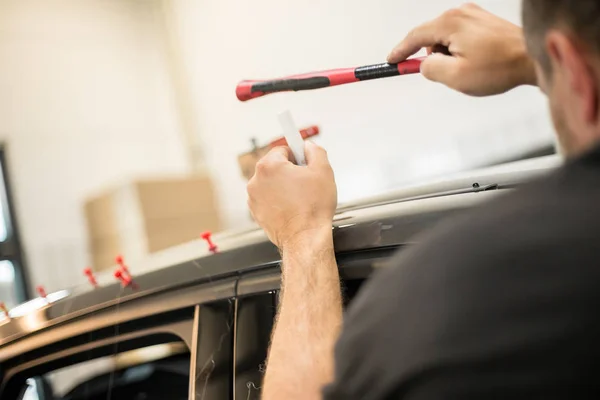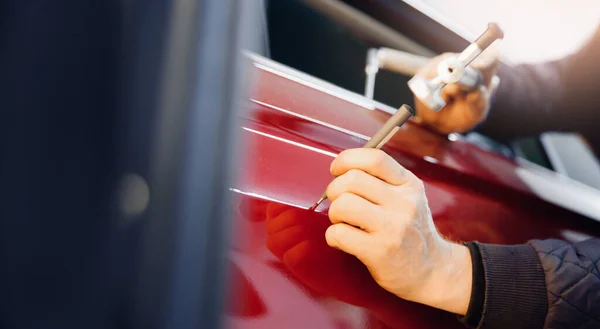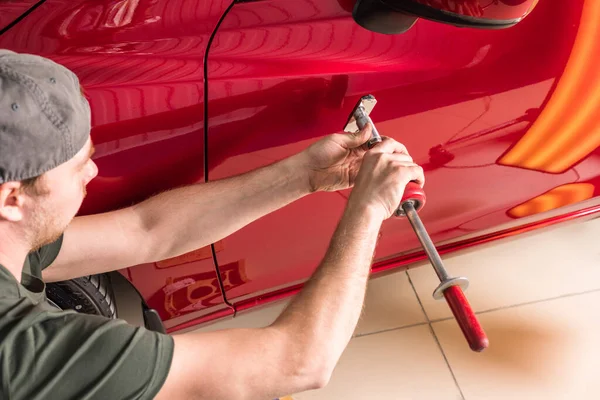Paintless Dent Repair: The Quick And Cost-Effective Solution For Vehicle Dents
Dents and dings on your vehicle can be frustrating, detracting from its overall appearance and potentially lowering its value. Fortunately, there’s a quick, efficient, and cost-effective solution: Paintless Dent Repair (PDR). This innovative technique has gained popularity among car owners and repair professionals alike. In this article, we will delve into the ins and outs of PDR, its benefits, and why it might be the ideal choice for your vehicle.
What is Paintless Dent Repair?
Paintless Dent Repair is a method of removing minor dents from the body of a vehicle without the need for traditional bodywork or repainting. PDR is typically used for small dents caused by hail, door dings, or minor collisions. The process involves the following:
- Accessing the Back of the Panel: Technicians work from behind the damaged area using specialized tools to push the dent back into its original shape.
- Gaining Precision: Skilled technicians carefully manipulate the metal back to its pre-damaged form without disturbing the factory paint finish.
This method not only maintains the vehicle's integrity but also offers a swift solution to common dent problems.
How Does PDR Work?
The process of Paintless Dent Repair involves several steps:
Inspection and Assessment
The first step in PDR is a thorough inspection of the dented area. A skilled technician evaluates the size, depth, and location of the dent, as well as the condition of the paint. This assessment helps determine if PDR is a viable option for the damage.
Accessing the Dent
Once the technician has assessed the damage, they will locate access points to the dent. This may involve removing interior panels, tail lights, or other components that block access to the affected area.

Dent Removal
Using specialized tools, the technician gently pushes or pulls the metal back into its original position. These tools are designed to apply pressure in a controlled manner, ensuring the metal is reshaped without damaging the paint. Skilled technicians have a keen eye for detail and can often work without any visible signs of repair.
Final Inspection
After the dent has been removed, the technician performs a final inspection to ensure the area is perfectly smooth and the paint finish is intact. If necessary, additional touch-ups may be performed to ensure a flawless result.
Benefits of Paintless Dent Repair
Cost-Effective Solution
One of the most significant advantages of PDR is its cost-effectiveness. Traditional dent repair methods often involve extensive bodywork and repainting, which can be time-consuming and expensive. PDR requires less labor and materials, resulting in lower costs for the vehicle owner.
Time-Saving Process
PDR is often completed in a matter of hours, depending on the extent of the damage. In contrast, traditional repairs can take days or even weeks, as they involve waiting for parts, paint curing, and more. For busy individuals or those who rely on their vehicles for daily transportation, this quick turnaround is a significant benefit.
Retains Original Paint Finish
Because PDR doesn’t involve sanding, filling, or repainting, it preserves the vehicle's original factory finish. This is particularly important for car enthusiasts or those who want to maintain the resale value of their vehicle. Keeping the original paint intact helps protect the vehicle’s authenticity and value.
Environmentally Friendly Option
Paintless Dent Repair is an eco-friendly option compared to traditional methods. Since PDR does not require the use of paints, solvents, or fillers, it generates less waste and reduces the impact on the environment. For those looking to make more sustainable choices, PDR is a clear winner.
Versatility
PDR can be used on various vehicles, including cars, trucks, SUVs, and even motorcycles. Whether the damage is from a minor accident or environmental factors like hail, PDR is often a suitable solution. Additionally, it can be applied to various areas of the vehicle, including doors, hoods, fenders, and roofs.

When to Choose Paintless Dent Repair
While PDR is an excellent option for many types of dents, it’s essential to know when it’s most effective. Here are the key scenarios where PDR shines:
Shallow Dents
PDR excels at repairing shallow dents that have not damaged the paint, typically resulting from minor collisions, door impacts, or small hail. Skilled technicians can carefully restore the metal without affecting the paint, making PDR an ideal option for preserving your vehicle's original finish and value.
Minor Dings
For small, shallow dents, Paintless Dent Repair (PDR) offers a quick and efficient solution. These minor imperfections often result from incidents such as a wayward shopping cart or light contact in parking areas. Since extensive repairs aren't necessary, PDR specialists can usually finish the job within minutes, enabling you to return to driving without significant delays or expenses.
Dents from Hail
PDR is highly effective for addressing hail damage, characterized by numerous shallow dents on a vehicle's surface. Traditional repair methods often struggle with such issues, but PDR technicians excel in evaluating the damage and efficiently repairing multiple dents at once. This approach not only saves time but also lowers overall repair costs, making it an ideal solution for vehicles affected by hail.
No Paint Damage
PDR is an excellent option when the paint remains undamaged. Since this technique involves reshaping the metal without repainting, intact paint is essential. If there are no cracks or chips, the chances of preserving the vehicle's original finish are significantly increased, which is particularly vital for newer models or those with unique paint finishes that are hard to replicate.
110 E 43rd St, Suite 120
Garden City, Idaho 83714, USA
Phone: (208)-251-5338

